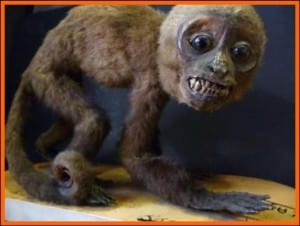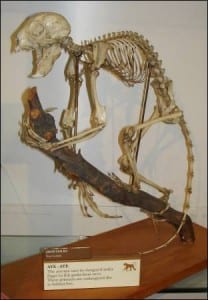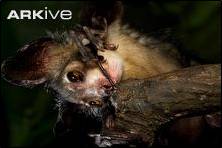Specimen of the Week: Week Sixty-Five
By Emma-Louise Nicholls, on 7 January 2013
 One of my most favourite animal experiences was in a breeding facility. That sounds weird… let me start again. I went to a facility that had this particular species, which I was more or less obsessed with at the time (pretty much still am actually), and pulled my ‘I’m a scientist’ card and asked to speak with the resident specialist on this animal. Not only was I permitted to speak with her, but she let me into the actual enclosure with the species. BETTER YET, as I bent down to get a close up of one individual, another jumped on to my back. OH YEAH! We have two fully articulated skeletons of this species at the Museum (not as a result of my visit). This week’s Specimen of the Week is…
One of my most favourite animal experiences was in a breeding facility. That sounds weird… let me start again. I went to a facility that had this particular species, which I was more or less obsessed with at the time (pretty much still am actually), and pulled my ‘I’m a scientist’ card and asked to speak with the resident specialist on this animal. Not only was I permitted to speak with her, but she let me into the actual enclosure with the species. BETTER YET, as I bent down to get a close up of one individual, another jumped on to my back. OH YEAH! We have two fully articulated skeletons of this species at the Museum (not as a result of my visit). This week’s Specimen of the Week is…
**The Aye-Aye**
1) The aye-aye is a prosimian. What’s that now? Ok, loosely and un-taxonomically complicatedly speaking, primates are split into three major groups. There are apes (you, me, gorillas and other tail-less humanoids like gibbons), monkeys (new world monkeys like capuchins and spider monkeys; old world monkeys like macaques, baboons and colobus monkeys; plus tarsiers, marmosets and tamarins) and then there are the prosimians. Prosimians include the possibly less-well recognised primates such as bushbabies, indri, pottos, lorises, lemurs and…the aye-aye. The final interesting-if-you-like-taxonomy fact is that the aye-aye is the only species in its entire family.
2) Aye-ayes are the largest nocturnal primates in the world, making them very cool, but a real challenge to spot. As with every species of modern lemur (as in geologically modern, not lemurs with an antiquated way of thinking), aye-ayes are only found on the African island country of Madagascar, a place I REALLY want to visit.
3) Aye-ayes are arboreal (tree-dwelling) and hang out in Madagascan rainforest. As opposed to other types of tree-based habitats. Unfortunately, Madagascar is being rapidly cleared of natural habitat to make way for sugar cane and coconut plantations. With its natural environment and food sources decreasing by the second, aye-ayes are turning to these plantations for food and are thus often killed as pests. A bit of a joke really.
4) Aye-ayes feed on fruit, nectar and insects. The absolutely brilliant fact about aye-ayes that all new aye-aye fans must learn is the unique morphology of its middle finger. Unique among primates, the aye-aye’s middle finger is elongated and extremely thin. I mean, scary-skin and bone, unhealthy looking thin. Aye-ayes use this finger to tap on tree trunks to locate insects which they hear with their humungous ears. They then bite through the bark with teeth strong enough to penetrate steel (I’ve been told) and then insert the boney finger through the hole to stab and retrieve the prey. Brilliant.
5) Some native Malagasy people believe the aye-aye to be an omen of evil to be feared. Legend has it that aye-ayes enter houses at night through the roof and use their elongated finger to cut the vein leading to the heart of their human victims. Despite the overwhelming lack of evidence for this, traditions will be traditions, and the aye-aye is subsequently persecuted.
Emma-Louise Nicholls is the Museum Assistant at the Grant Museum of Zoology
One Response to “Specimen of the Week: Week Sixty-Five”
- 1
 Close
Close






[…] Striped possums are basically the marsupial version of aye-ayes. Marsupials are probably the most down-trodden of the mammalian kind. There are convincing […]